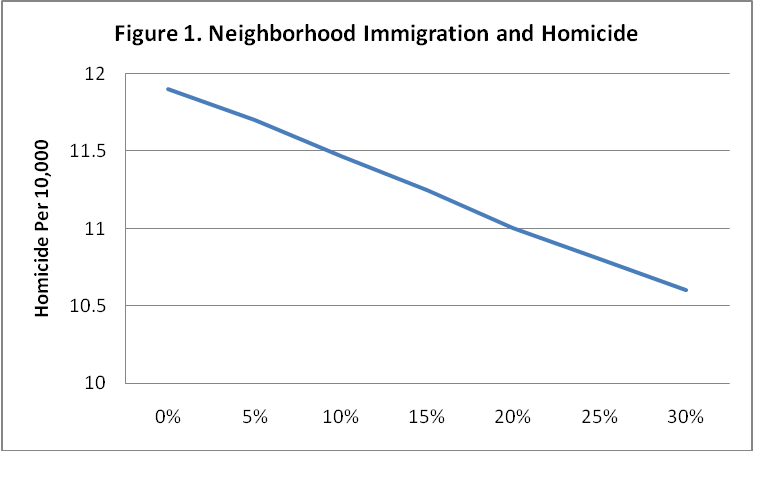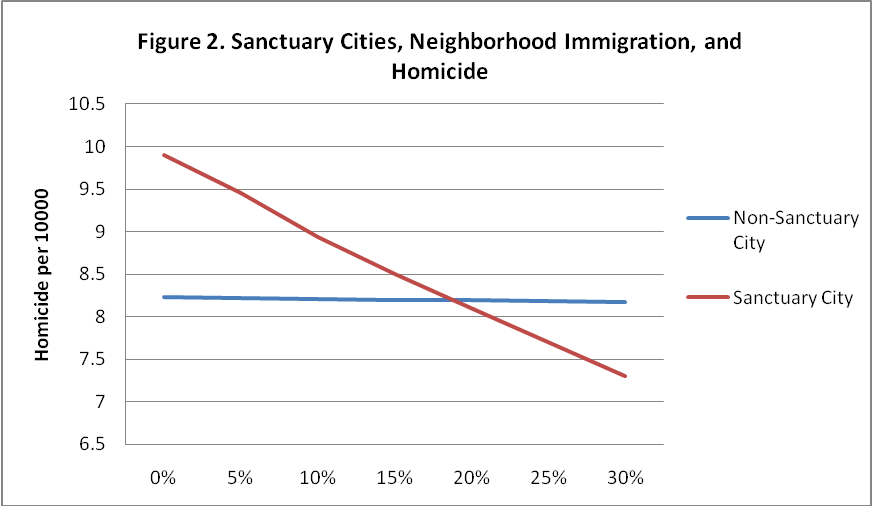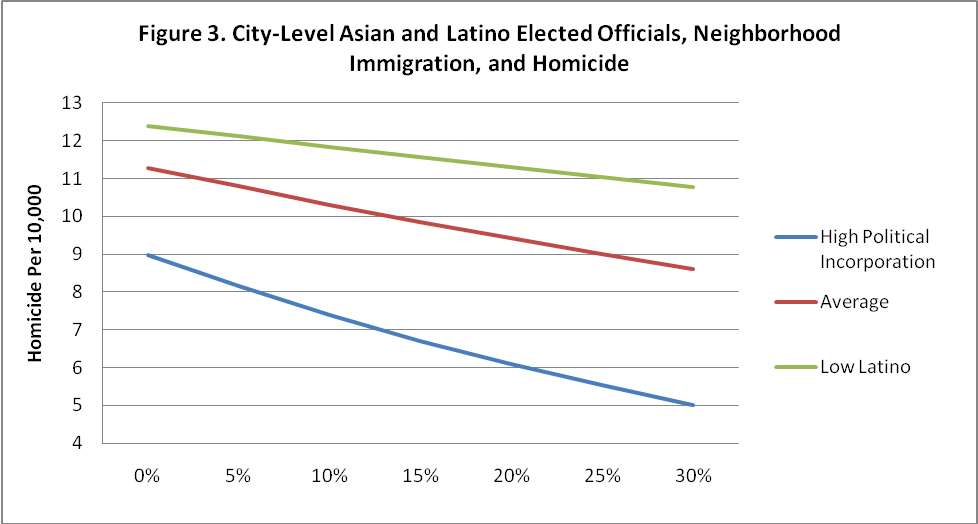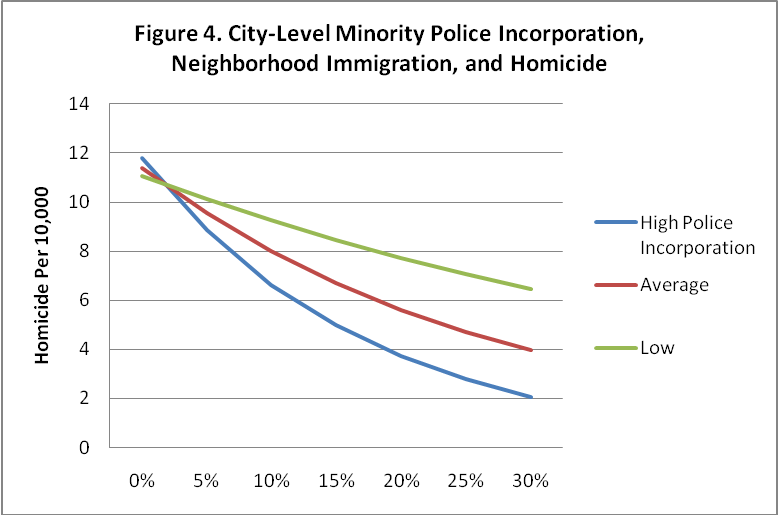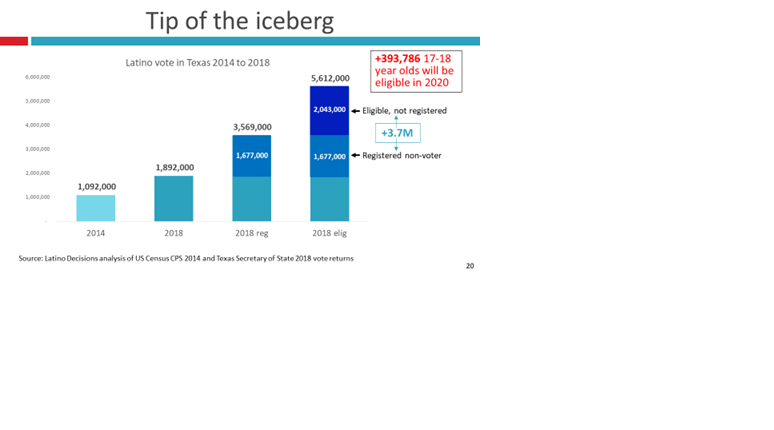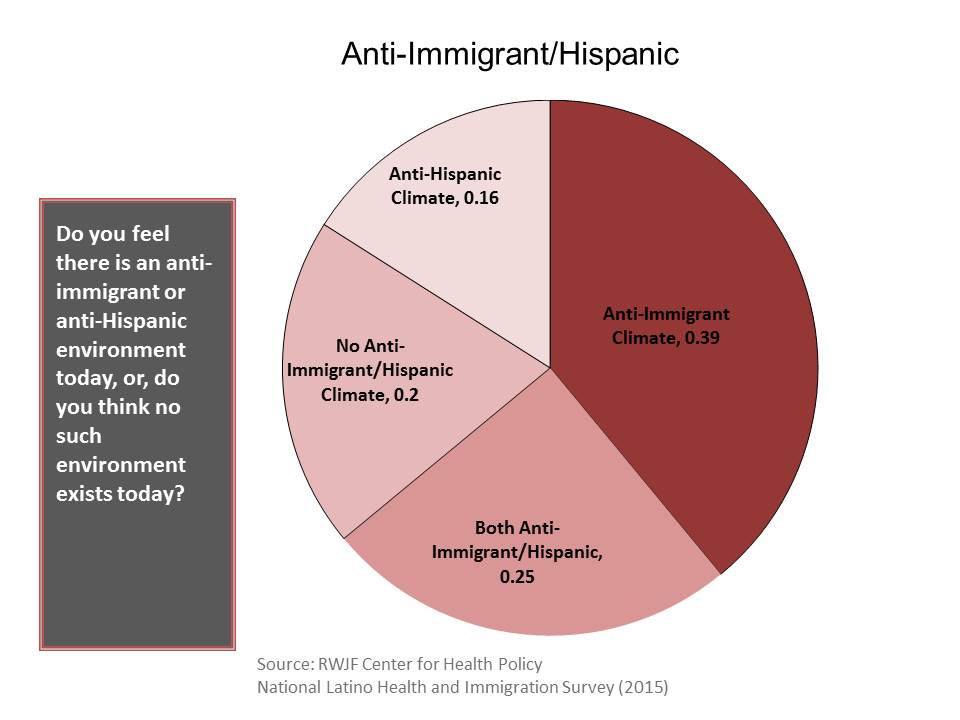By Christopher Lyons and Maria Vélez, University of New Mexico
Advocates for more punitive immigration laws often argue that there is a correlation between immigration and crime, thus contending that securing our borders will make our neighborhoods safer. Consequently, several states have passed laws that allow police to check the immigration status of individuals they stop for other reasons, and in the case of Alabama, arrest anyone who knowingly gives an illegal immigrant a ride. Our most recent poll indicates that a majority (67%) of the Latino electorate disapprove of laws that would require state and local police to check on immigration status, and approve (62%) of laws that would block state and local police from policing immigration status. To clarify the relationship between immigration and crime, we have asked Criminologists Christopher Lyons and Maria Velez (both from UNM) to draw from their research in this blog post.
Do Immigrants Actually Reduce Crime?
Since the early waves of immigration in the late 1800’s, public opinion and political rhetoric have often equated both legal and illegal immigrants with an array of social problems, ranging from drug and alcohol use to serious violence. According to data from the 2000 General Social Survey (NORC), about 73 percent of respondents agree that immigration leads to increased crime in the U.S. This assumption implies that stricter policies that limit future immigration and curb access to programs and resources for immigrants already in the U.S. are effective crime control strategies. Indeed, supporters of anti-immigrant policies, including Arizona’s recent SB 1070, often explicitly argue that tougher immigration laws and punitive anti-immigrant stances will translate to reductions in community violence.
But does immigration really lead to more crime in our communities? According to most social science research, the answer is “NO.” A growing body of research repeatedly finds that communities with more immigrants actually have less violence than otherwise expected (Martinez 2006; Sampson 2006; Wadsworth 2010). This finding is relatively robust across cross-sectional and longitudinal designs at the individual, neighborhood, and city levels.
Contrary to the arguments of pundits and to public opinion, scholars typically suggest that rather than destabilize communities, immigrants “revitalize” neighborhoods because they fortify processes related to crime control. When immigrants move into communities they can strengthen relationships among residents, invigorate local ethnic economies, and help to expand community institutions such as churches, schools, and immigrant-focused agencies. Social science research suggests that immigrants are “good news” for communities, especially in the relatively poor communities where the vast majority of recent immigrants reside, and challenges popular assumptions that stricter anti-immigration stances are an answer to America’s crime problem.
Despite growing consensus in social science about the beneficial impact of immigration for neighborhood safety, we know less about the broader contexts that might influence the ability of immigrants to reduce neighborhood violence. Immigration scholars have long suggested that city characteristics vary in ways that are consequential for immigrant incorporation (Portes and Rumbaut 2006). We ask whether the capacity of immigrants to revitalize neighborhoods depends on a city’s ability to receive and support new immigrants. Drawing on prominent theories of minority political incorporation and collective organization, we emphasize the importance of “immigrant opportunity structures”—the political, social, and economic environments that promote the advancement of immigrant concerns and facilitate the incorporation of immigrants. We expect that relatively “open” city regimes with greater opportunity structures—characterized by open government arrangements, liberal ideologies, resources for mobilization on behalf of immigrant demands, and minority political incorporation in elected offices—are best able to incorporate recent immigrants, and to encourage or facilitate the revitalization capacity of immigrants at the neighborhood level. Consequently, reduced immigrant opportunity structures in some cities may diminish the revitalization capacity of immigrants.
Research Design and Findings
We address these questions with the first large-scale dataset that includes violence and socio-demographic information for almost 9,000 neighborhoods within a representative sample of U.S. cities (89 cities with populations of more than 100,000 in the year 2000) (Peterson and Krivo 2010). The large sample of cities and neighborhoods generalizes to most urban places and includes traditional immigrant gateway and non-gateway cities. Although we control for a number of key predictors of neighborhood violence, we concentrate on the association between neighborhood homicide levels (the most serious and reliably reported indicator of violence) and the percent of the population who is foreign born and entered the U.S. within the last 10 years. We append this dataset with numerous measures of city openness to immigrants and immigrant political opportunities collected from a variety of secondary sources. We highlight three indicators of immigrant opportunity structures here. First, as a measure of more immigrant-friendly policy climates, we consider whether cities are “sanctuary cities” that have at least one law or resolution that limits the local enforcement of immigration laws.[1] Second, we measure the extent of minority political representation in municipal offices with the rate of Latino and Asian elected officials per 1,000 Latinos and Asians in a city.[2] Third, we capture minority bureaucratic incorporation with a ratio of the percent of the police force (sworn officers) who are Hispanic or Black and the percent of the city population who are Hispanic or Black.[3]
Consistent with the revitalization hypothesis and contrary to much public discourse, our multivariate, multilevel analyses reveals that the relationship between percent recent immigrant and neighborhood homicide, on average, is negative across the nearly 9,000 neighborhoods in our dataset. Figure 1 shows the average relationship between percent recent immigrants and neighborhood homicide levels for 89 of the largest cities in the US, holding constant a variety of other covariates at the neighborhood and city levels. However, the magnitude of the “protective” relationship varies substantially across cities. For example, as Figure 2 illustrates, the negative association between immigration and homicide is limited to those sanctuary cities that have taken relatively pro-immigration stances (about 25% of our sample); in non-sanctuary cities, immigration has no meaningful impact on homicide.
We also find that neighborhoods in cities with greater political incorporation of Asians and Latinos into elected municipal offices benefit most from immigration (Figure 3), although even in cities with average or low levels of minority political incorporation, neighborhood immigration still lead to less homicide. Similarly, the incorporation of minorities into law enforcement also influences the association between neighborhood immigration and homicide. As shown in Figure 4, the negative association between neighborhood immigration and homicide is strongest in cities with higher levels of descriptive representation of minorities in police departments.
Conclusions and Implications
These findings suggest that the protective association between recent immigrants and neighborhood violence is enhanced in cities with more open immigrant opportunity structures. Contrary to public opinion and political rhetoric, our research joins a chorus of others in suggesting that immigrants might make us safer. However, the ability of immigration to translate into less violence partly depends on the socio-political climates of immigrant reception. We suggest that punitive policies being enacted in many states may, ironically, decrease the potential benefits of immigration for our communities. By marginalizing newcomers, less open regimes may set in motion constraints to immigrant incorporation and prosperity that may have less-than-ideal consequences for community viability.
How do we make sense of the long standing disconnect between the vast majority of social science research and punitive stances that invoke the notion of immigrant criminality? Certainly, some immigrants do commit serious crimes, but the vilification of immigrants as criminogenic largely represents a “symbolic crusade” driven by fear and anxiety about the changing fabric of our communities. We need to understand the consequences of symbolic crusades against immigrants for our communities and for immigrants themselves. Social and political restrictions on immigrant incorporation marginalize individuals and may also undermine the safety of our communities more broadly. In the end, we join the call for evidence-based immigration policies rather than policies and social climates based on fear and unfounded assumptions of immigrant criminality.
Christopher Lyons and Maria Velez are both Assistant Professors of Sociology at the University of New Mexico.
Literature Cited in Blog Post
Martinez , Ramiro, Jr. 2006. “Coming to America: The Impact of the New Immigration on Crime.” Pp 1-19 in Immigration and Crime: Race, Ethnicity, and Violence, eds. R. Martinez Jr. and A. Valenzuela Jr. New York: New York University Press.
Peterson, Ruth D. and Lauren J. Krivo. 2010. The National Neighborhood Crime Study, 2000 [Computer file]. ICPSR27501-v1. Ann Arbor, MI: Inter-university Consortium for Political and Social Research [distributor]. doi:10.3886/ICPSR27501
Portes, Alejandro and R. G. Rumbaut. 2006. Immigrant America: A Portrait. Berkeley: Univeristy of California Press.
Sampson, Robert J. 2006. ‘‘Open Doors Don’t Invite Criminals: Is Increased Immigration Behind the Drop in Crime?’’ New York Times March 11:A27.
Wadsworth, Tim. 2010. Is Immigration Responsible for the Crime Drop? An Assessment of the Influence of Immigration on Changes in Violent Crime between 1990 and 2000. Social Science Quarterly 91:531-553.
Footnotes
[1] The National Immigration Law Center provides data on whether cities have statutes that limit enforcement of immigration law.
[2] The 2000 National Association of Latino Elected Officials directory and the 2000 National Asian and Pacific American Political Almanac provide data on elected municipal officials. Population estimates for Latinos and Asian Americans come from the 2000 Census (STF 3A).
[3] The Law Enforcement Management and Administrative Statistics (2000) survey provide data on sworn police officers. Population estimates for Latinos and African Americans come from the 2000 Census (STF 3A).

